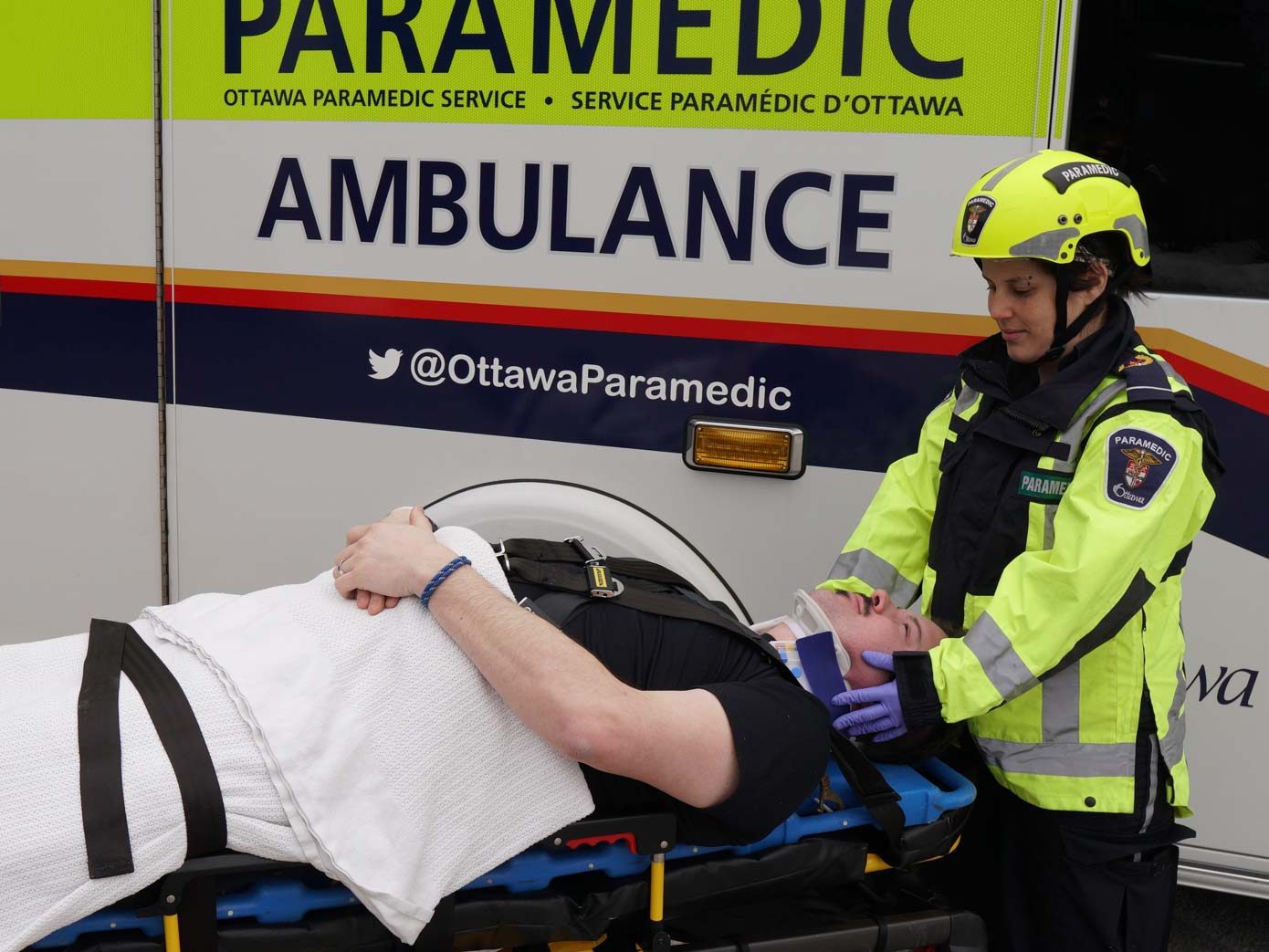
A Pragmatic Strategy Empowering Paramedics to Assess Low-Risk Trauma Patients with the Canadian C-Spine Rule and Selectively Transport them Without Immobilization
Issue
- Each year, half a million patients with a potential neck (c-spine) injury are transported to Ontario emergency departments (ED). Less than 1% of these patients actually have a neck bone fracture. Even fewer (0.5%) have a spinal cord injury or nerve damage. These injuries usually occur at the time of initial trauma and not during transport to the ED. Currently, paramedics transport all trauma victims (with or without an injury) by ambulance using a backboard, collar, and head immobilizers. Trauma victims can stay immobilized for hours until an emergency department bed is available or until x-rays are completed.
- Long immobilization is often unnecessary, causes patient discomfort and pain, decreases community access to paramedics, contributes to ED crowding, and is very costly.
Project
- We developed the Canadian C-Spine Rule (CCR) for alert and stable trauma patients. This decision rule helps emergency department physicians and triage nurses to safely and selectively remove immobilization, without x-rays and missed injury. We taught Ottawa paramedics to use the CCR in the field which allows them to transport eligible patients to hospital without immobilization devices. They have evaluated 3,854 patients, 60% were transported without immobilization, and all those with a c-spine injury were correctly identified and immobilized.
- We will evaluate the possibility and benefits of allowing paramedics to use the CCR in the field in 12 new communities across Ontario. Patients have suggested we include measures of pain and discomfort from being immobilized during transport as important patient-centred outcomes. We will also measure the impact on the ED, and how much money could be saved if we allowed more paramedics to use the CCR. We will also assess if sex, age, language barriers, or living far from the hospital (long transport time) will affect the outcomes of the study.
- Greater than 60% of all eligible trauma patients (300,000 in Ontario) can be transported safely and comfortably without c-spine immobilization devices. Implementation of the CCR by Ontario paramedics would reduce patient discomfort, paramedic intervention times, ED crowding, unnecessary x-rays, and healthcare costs. This could be achieved rapidly and with lower healthcare cost compared to current practices (possible cost saving of $36 per immobilization, or $10,656,000 per year).
Patient engagement
- A patient representative is participating as a member of the project Steering Committee to share her perspectives on the research and to help interpret the study results and help guide future study directions. A committee of patients will also be struck with representation to include groups possibly affected by inequity.
- The approach to patient engagement follows the guiding principles of inclusiveness, support, mutual respect, and co-building set forth by the SPOR Patient Engagement framework. It has been also been inspired by the work published by the UK INVOLVE group, the U.S. PCORI methodology on how to involve members of the public in research, and guided by a conceptual model proposed by Deverka on stakeholder engagement.
Publications and Multimedia
- Pragmatic Strategy Empowering Paramedics to Assess Low-Risk Trauma Patients with the Canadian C-Spine Rule and Selectively Transport Them Without Immobilization: Protocol for a Stepped-Wedge Cluster Randomized Trial, JMIR Research Protocols, June 01, 2020
- Health Services: Engaging patients to develop a patient-reported outcome measure for the emergency department, CMAJ, November 07, 2018
- Recommendations for patient engagement in patient-oriented emergency medicine research, CJEM, April 25, 2018
- Podcast: Engaging patients in health research
Photo credit: Courtesy of Ottawa Paramedic Service
